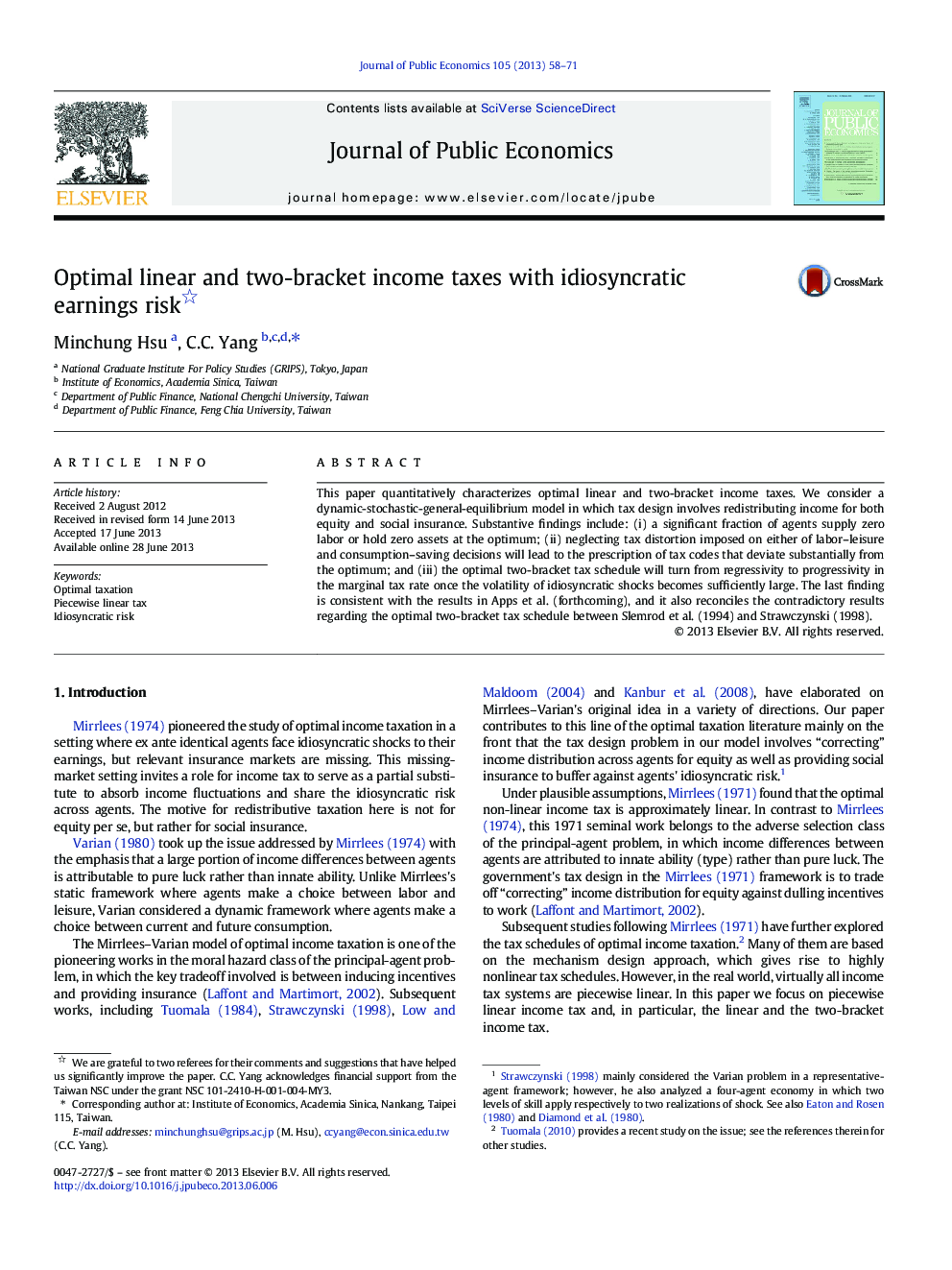| Article ID | Journal | Published Year | Pages | File Type |
|---|---|---|---|---|
| 969791 | Journal of Public Economics | 2013 | 14 Pages |
•This paper quantitatively characterizes optimal linear and two-bracket income taxes•A significant fraction of agents supply zero labor or hold zero assets at the optimum•Neglecting tax distortion on either of labor-leisure and consumption-saving decisions will be suboptimal•The optimal marginal tax schedule will turn from regressivity to progressivity if shocks are sufficiently large•Over a certain threshold, neutrophils may reduce inflammation in the CNS
This paper quantitatively characterizes optimal linear and two-bracket income taxes. We consider a dynamic-stochastic-general-equilibrium model in which tax design involves redistributing income for both equity and social insurance. Substantive findings include: (i) a significant fraction of agents supply zero labor or hold zero assets at the optimum; (ii) neglecting tax distortion imposed on either of labor–leisure and consumption–saving decisions will lead to the prescription of tax codes that deviate substantially from the optimum; and (iii) the optimal two-bracket tax schedule will turn from regressivity to progressivity in the marginal tax rate once the volatility of idiosyncratic shocks becomes sufficiently large. The last finding is consistent with the results in Apps et al. (forthcoming), and it also reconciles the contradictory results regarding the optimal two-bracket tax schedule between Slemrod et al. (1994) and Strawczynski (1998).
